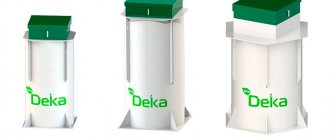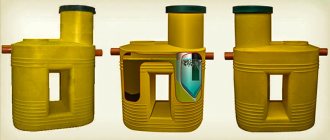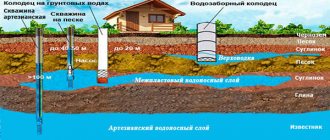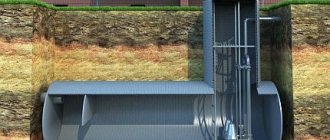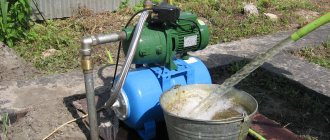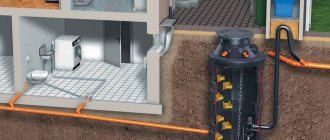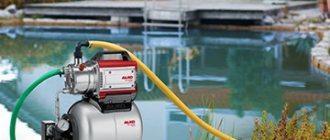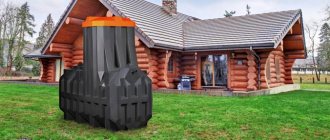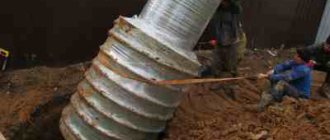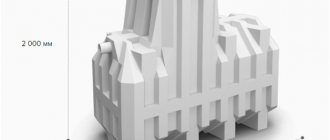Automatic pumping stations are indispensable assistants in any suburban area, because they perform a wide range of functions: from the usual supply of water to the house to pumping out liquids from hard-to-reach areas. In view of this, it is not surprising that the market is overcrowded with a wide variety of models of pumping equipment. But today we will not plunge into this assortment, but will get acquainted with one of the most popular pumping stations - “Marina”. The main design features, technical characteristics, principle of operation, connection details, as well as potential malfunctions and options for correcting them - for your attention, complete instructions for the operation and maintenance of the Marina station.
Design features
The Marina pumping station is a complex installation for automatic supply and distribution of water.
It can be used to lift water from any autonomous sources and reservoirs both into the house itself and into special storage tanks on the site. The standard unit includes the following structural components:
- body – made of steel or cast iron with mandatory anti-corrosion treatment;
- pumping unit, which is responsible for suctioning water;
- a motor that ensures the start of pumping equipment;
- a hydraulic accumulator with a rubber membrane, which is equipped with a pneumatic valve for pumping air;
- pressure gauge for pressure control;
Pumping station design
- a pressure switch that regulates the switching on/off of the station when the pressure level drops and rises;
- a check valve that maintains a certain water level in the system in case of unauthorized shutdown of the pump;
- thermal protective relay that turns off the unit in case of emergency overheating of the engine;
- connecting fittings – adapters and pipes;
- power cord to connect the station to power.
Features of operation and maintenance
Italian water supply units do not require special maintenance. Stations are sold ready for installation, connection and operation. It is important to initially mount the unit on a specially prepared level area. It is advisable to install the equipment as close as possible to the water intake point. You can install a specially insulated caisson under the unit.
The equipment does not require lubrication. The exception is seasonal operation of the station. If you use the equipment only in the summer, the installation must be removed for the winter. First, drain all the water from it and lubricate the working units. Should be stored in a dry, moderately warm place.
If for some reason the Marina station is out of order, it is advisable to contact a service center to troubleshoot the problem. Otherwise, Italian technology works like a well-oiled machine.
Specifications
Marina pumping stations are presented in a wide range, so there is no need to talk about general technical parameters. Therefore, let’s look at the characteristics of the three most common brand lines: CAM, RSM, APM.
- CAM is a line with the largest selection of models: here you can find both budget units with a power of no more than 700-800 W and a maximum productivity of 50 l/1 min, as well as solid devices with a power of 1500 W and a productivity of over 60 l/1 min. The weight of the station can vary from 12 to 29 kg. But the suction depth for all models is the same - about 8 m.
Pumping station Speroni Marina CAM
- RSM is a line of low-power pumping stations for supplying water over short distances. The suction depth of such devices is small - no more than 7 m. However, the productivity is high - up to 100 l/1 min.
- APM is the most expensive line, represented by pumping stations for pumping water from unusually large depths: up to 50 m. Ideal for lifting water from deeply buried wells and boreholes. The high efficiency of the models is determined by the increased pump power - 1500 W. The average weight of APM devices is 27 kg.
It is fair to note that stations of all three lines share such operational advantages as reliable operation, ease of installation and low noise level.
Criterias of choice
Select the Marina station according to the following parameters:
- Case material. The durability of the unit under different operating conditions depends on it. If the station is intended to be used in field conditions, it is better to take equipment in a steel or cast iron case. Polymer is also suitable for installing equipment in an insulated basement.
- Storage tank volume. Calculated based on the number of family members. For two or three people, a hydraulic accumulator of 25-40 liters is enough. The more people living in the house, the larger the tank volume should be.
- Station power. To perform numerous tasks - watering, supplying water to all taps of the house - you need to take more productive equipment.
- Permissible suction depth. It is calculated by the length of the distance from the point of water intake to the point of its supply (taps).
If you plan to supply liquid from very deep wells, it is better to take a unit with a remote ejector. Additionally, attention should be paid to various protection systems - from overheating, dry running, etc.
Operating principle
All Marina pumping stations operate according to the same scheme:
- after connecting the power supply, the pump is activated and begins to draw water from the source;
- water fills the hydraulic tank and at the same time the pressure in the system increases;
- when the pressure reaches the maximum level specified by the settings, the relay turns off the pump;
- when the water tap is opened, the liquid begins to move through the pipes from the hydraulic tank to the consumer;
- As water is used, the pressure in the accumulator drops and, when it drops to the minimum level, also specified by the settings, the relay again activates the pump and it begins to pump water again.
The operating principle of the pumping station is very simple.
Such cycles are repeated while the consumer operates the pumping equipment. But even when the station is not in use, a certain volume of water is stored in the hydraulic tank - it acts as a hydraulic shock damper: it extinguishes them at the first sign of their appearance, thereby protecting the unit from damage.
Important! The Marina pumping station must not be used without water or when air masses enter the suction line - operation of the device in both cases is fraught with the occurrence of serious and sometimes irreversible malfunctions.
Advantages and disadvantages
A coarse filter will extend the service life of the pumping station.
Italian pumping units have a number of competitive advantages over other similar units:
- European build quality. All stations are assembled exclusively in Italy.
- Manufacturer's warranty 3-4 years.
- Economical energy consumption.
- Minimum noise level during operation.
- Availability of various protection systems.
- Installation of equipment is understandable even for a novice master.
However, some masters also identified a drawback in Italian technology. This is considered to be the inability of Marina stations to pump water with the inclusion of fine debris. Equipment from Italy is intended only for pumping clean water.
To protect Marin units from failure due to debris entering the system, it is advisable to immediately install coarse filters on the inlet hose.
Prices for Italian pumping equipment range from 4,700 to 22,000 rubles. The cost directly depends on the technical characteristics of each model: power, water intake depth, pressure, body material, tank volume, availability of additional systems and options.
Connecting the pumping station
The Marina pumping unit is connected according to the following algorithm:
- Locate the pumping station as close to the water source as possible.
- Mount the suction line: prepare a pipe with a check valve and connect one end of it to the inlet of the pump, and lower the other no less than 25-30 cm into the water intake source. The suction line should be located with a slope of 2-3 degrees towards the source. To connect the pipe to the station, use a special threaded adapter.
Advice. For reliability, seal the junction of the suction pipe with the pump inlet using FUM tape.
- Install the pressure line: connect the pipe to the upper outlet of the pumping station.
- Open the filler hole of the suction line and fill the unit with water. After pumping water is complete, close the filler hole.
Connecting the pumping station
- Check the pressure level in the hydraulic tank - it should be within 1.5-2 atm. If the pressure is lower, pump the air through the pneumatic valve with a car pump to the required level, and if it is higher, bleed the air through the same pneumatic valve.
- Connect the pumping station to the electrical network.
Water pump installation
To install and connect the water pump unit, you do not need to purchase additional equipment or special tools. All work can be done with your own hands, without the services of a specialist. To simplify installation, manufacturers provide instructions that describe in detail the establishing procedure and rules for operating the system. According to the recommendations put forward, it is initially necessary to prepare the area where the pumping station will be located. The place should be near a water source, with a hard and level surface. Such preliminary work will help eliminate vibration of the Speroni pump during its operation, which, in turn, will extend its service life.
Having mounted the product on the work site, you can connect all the working elements of the system in the following order:
- One end of the water intake hose is connected to the pump, and the other is lowered into the water supply source;
- A supply pipeline is mounted to the hydraulic tank;
- A supply pipe is led from the hydraulic accumulator and fixed to the water supply points of the house.
Upon completion of the work performed, it is necessary to check the functionality of the system. To do this, a certain amount of water is poured into a special hole in the pump, and the electrical cord of the equipment is connected to the network.
Malfunctions and ways to eliminate them
Any equipment, no matter how expensive and high-quality it is, may one day fail. And Marina pumps are no exception here, so we will further find out what malfunctions most often occur with these units and how to solve the problems that arise with your own hands.
Problem No. 1: the station does not turn on. The most likely reason is lack of power supply. Options to fix the problem:
- call the electrical connection diagram;
- clean the contacts;
- Renew the pressure switch coil.
Malfunction No. 2: The pump works, but water either does not flow into the system at all, or flows in only intermittently. Reasons: lack of water in the hydraulic tank; leaks in pipelines; incorrect operation of the check valve. Solutions:
- if there is no water, add it through the filler hole or lower the suction pipe deeper into the source;
- if there is a leak, check the tightness of the joints of the pipes and the pump and, if necessary, update the FUM tape;
- If the check valve is deformed, replace it.
Problem #3: The pump does not turn off. The reason is a failure of the pressure switch. Solution: adjust the relay using its small and large springs - re-set the minimum and maximum pressure values.
You can fix most problems with the station yourself.
Fault No. 4: The pump operates jerkily. Causes: damage to the hydraulic tank membrane; depressurization of the tank body. Correction options:
- press the hydraulic tank nipple - if water comes out instead of air, it means the membrane is deformed and needs to be replaced;
- find the location of the breakdown of the housing and close it with any sealing compound.
So, taking into account all the technical features and characteristics of the Marina pumping station, we can say without exaggeration that this is one of the most worthy units in its category. By following the recommendations for its connection, operation and maintenance, you can reduce the risk of malfunctions to a minimum. And if they do appear, then eliminating them will not be difficult - all the tips and subtleties are in front of you.
Advantages and disadvantages
The advantages include indicators such as:
- small dimensions allowing the station to be installed in a small room;
- due to the absence of complex structural elements, installation and adjustment of equipment can be carried out on their own;
- most problems can be resolved without contacting specialists;
- Long operating time without the need for constant monitoring.
Like any mechanism, Marina stations have their drawbacks.
- Adjusting the relay is somewhat difficult, especially for non-specialists. This disadvantage is eliminated by the presence of detailed instructions in the package.
- For normal operation of the station, it is desirable that the pumped water be clean. When sampling from an open source, it is necessary to install filters.
- Increased humidity leads to condensation settling on the connecting flanges. This leads to corrosion. The solution to the problem is timely coating of surfaces with any protective composition.
Pumping station Marina: photo
Reviews and recommendations
Judging by user reviews, pumping units from Italy are worth the money spent on them.
Maxim, 44 years old. I have a dacha slightly higher up from the rest of the houses in the village. There is a good pond nearby, so I bought a Marina station from the CAM series for watering the garden (on the advice of my godfather). The unit was installed in an equipped caisson with a depth of 80 cm. The pump pumps water properly. And even with continuous work of two to three hours it shows no signs of fatigue. The pressure is good. When installing, I immediately installed a coarse filter on the inlet hose. The station has been operating for the third summer. No complaints.
Sasha, 42 years old. I bought an Italian Marina station two years ago for a country house. I took a model from the ARM 100/25 series. Enough for a family of 3 people. I did the installation myself, even though I had never done anything like this before. Everything is simple there. The main thing is to immediately pump water into the system. Station management is simple. In two years it has never let me down. As soon as I set the working pressure, it works.

